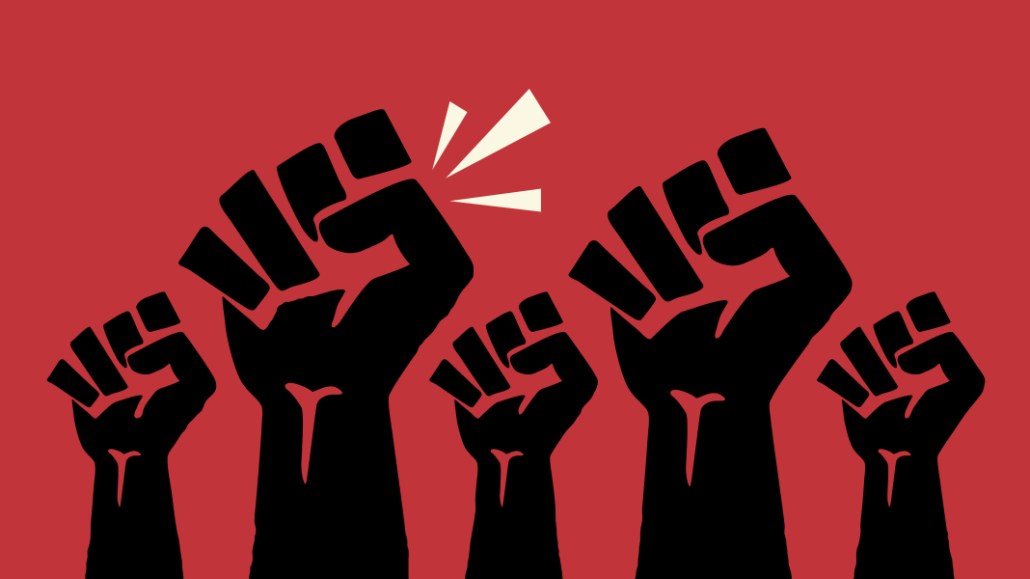‘You need to fix the entire line’: Publishers’ sales and revenue teams struggle with entrenched diversity problem

The eruption of protests and demonstrations over past several weeks, have forced media companies to reflect on the lack of diversity within their organizations, a reckoning that has led to the departures of top executives at publications including Bleacher Report and Refinery29.
Most of those conversations have focused on the editorial side, where that homogeneity has led to blind spots in coverage and mistreatment of non-white employees.
Yet those imbalances are even more pronounced on the sales and revenue side of most media companies, where broken talent and recruiting pipelines, inadequate mentoring, diversity and inclusion practices and double standards create workforces that are disproportionately white and male, according to five sources that spoke to Digiday for this story. All five sources say the events of the past two months have injected urgency into conversations on this subject, and several say that they think there is a chance for real change.
“You hear real urgency now,” said one top sales executive at a legacy publisher, who added that it could take years to manifest meaningful change.
Yet some are dubious that any real change is coming. The factors that contribute to this imbalance are systemic and spread across the entire ecosystem, leaving little chance for a fix.
“I don’t know if there’s a reckoning yet, and I don’t know that there’s going to be one,” said one Hispanic revenue leader at a media company. “You need to fix the entire line [of the ecosystem]. If you have a client that is not a person of color talking to an agency rep that’s not a person of color speaking to a sales rep who’s not a person of color, how is that representative of reality?”
It is difficult to find data that speaks to the scope of this problem in media. The sales profession as a whole remains male-dominated, even after significant gains in leadership made by women in recent years. Research firm Gartner this year found that just 11% of sales leadership positions are held by women, up from just 5% in 2017.
A separate Gartner report published last month found that men and women of color occupy few senior roles of any kind in the arts, entertainment and recreation industries, which includes media: Just 11% of senior roles are held by women of color, and men of color occupy just 16%, the report said.
Claire Telling, the CEO of executive recruiting firm GraceBlue, estimates that people of color represent around 6% of the C-suite in advertising and media as a whole. (A number of advertising agencies have begun releasing their diversity numbers over the past month) In cases when clients are determined to vet non-white candidates for sales and revenue roles, Telling and her colleagues frequently have to look outside of media.
There are abundant reasons for that talent shortage, starting at the most junior level.
“There just aren’t a lot of people getting into the field,” said Keith Hernandez, the founder of the consultancy Launch Angle and a former sales executive at publications including BuzzFeed, Bleacher Report and Slate. “There’s not a National Association of African American Advertising Sales going to Syracuse and Penn State [to recruit].”
And non-white people who do enter the space face a battery of obstacles, including double standards that many say put non-white employees at a disadvantage. For example, where a white sales person might be allowed to miss their numbers, or be given a chance to grow into a role they had not yet earned, non-white employees don’t get similar chances.
“We’re not always allowed to fail the way others have been allowed to fail,” Cavel Khan, the chief revenue officer of Tumblr, told Beet.tv last month. “You feel this pressure to be perfect every time.”
Those that do stick it out have to navigate cultural barriers as they try to build relationships and advance their careers. “Golfing, ski trips, these are predominantly white activities, that start to deselect people out,” Hernandez said. “A guy decides not to go and gets a rep that he doesn’t like to have fun, but really, he just doesn’t know how to ski. You’re throwing people into a situation where they’d hurt themselves more by going.”
While disparities this stark are problematic on their own, these imbalances come with an economic cost for publishers too.
“I find it hard to work with the general market because they don’t give me what I need,” said Armando Azarloza, the founder of The Axis Agency, a multicultural agency whose services include media buying.
Even though many mainstream publications might have the audience and the content that fits well with clients’ objectives, the white reps often do a poor job selling it; mainstream publications are “100%” leaving money on the table because of the composition of their sales forces, Azarloza said.
“They have a superficial understanding of the marketplace,” he added.
Amid these systemic challenges, media companies have scrambled to look for ways to add diversity to the ranks of their sales and revenue teams. Over the past several weeks, Telling said many of her media clients have said that they are eager to find more diverse candidates for positions they have open.
But she cautioned that the jobs have to be real. “People can smell tokenism,” Telling said. “Talent knows when that’s going on.”
More in Media

What publishers are wishing for this holiday season: End AI scraping and determine AI-powered audience value
Publishers want a fair, structured, regulated AI environment and they also want to define what the next decade of audience metrics looks like.

Media giant Essence launches a marketplace for Black women-led brands
Essence has launched WeLoveUs.shop, a new online marketplace dedicated to Black women-led brands.

In Graphic Detail: The state of AI referral traffic in 2025
The stats reveal a new audience pipeline forming outside of traditional search and social platforms.







